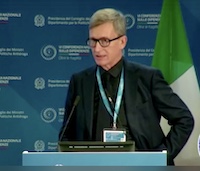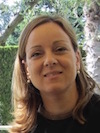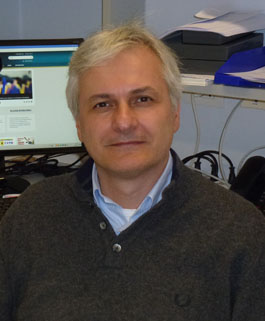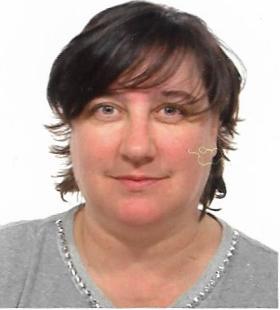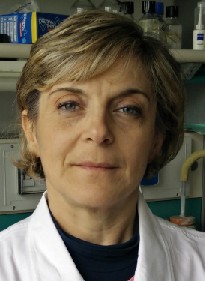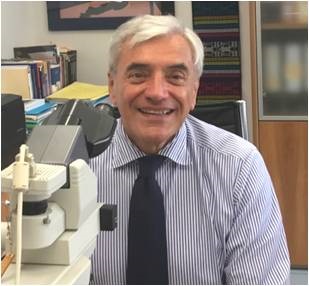Studiare
In questa sezione è possibile reperire le informazioni riguardanti l'organizzazione pratica del corso, lo svolgimento delle attività didattiche, le opportunità formative e i contatti utili durante tutto il percorso di studi, fino al conseguimento del titolo finale.
Calendario accademico
Il calendario accademico riporta le scadenze, gli adempimenti e i periodi rilevanti per la componente studentesca, personale docente e personale dell'Università. Sono inoltre indicate le festività e le chiusure ufficiali dell'Ateneo.
L’anno accademico inizia il 1° ottobre e termina il 30 settembre dell'anno successivo.
Calendario didattico
Il calendario didattico indica i periodi di svolgimento delle attività formative, di sessioni d'esami, di laurea e di chiusura per le festività.
| Periodo | Dal | Al |
|---|---|---|
| TLB LEZ 1ANNO 1 SEM 16-17 | 2-ott-2017 | 7-dic-2017 |
| TLB LEZ 2ANNO 1 SEM 16-17 | 2-ott-2017 | 7-dic-2017 |
| TLB LEZ 3ANNO 1 SEM 16-17 | 2-ott-2017 | 7-dic-2017 |
| TLB LEZ 3ANNO 2 SEM 16-17 | 5-mar-2018 | 4-mag-2018 |
| TLB LEZ 2NNO 2 SEM 16-17 | 5-mar-2018 | 4-mag-2018 |
| TLB LEZ 1NNO 2 SEM 16-17 | 5-mar-2018 | 4-mag-2018 |
Calendario esami
Gli appelli d'esame sono gestiti dalla Unità Operativa Segreteria Corsi di Studio Medicina.
Per consultazione e iscrizione agli appelli d'esame visita il sistema ESSE3.
Per problemi inerenti allo smarrimento della password di accesso ai servizi on-line si prega di rivolgersi al supporto informatico della Scuola o al servizio recupero credenziali
Per dubbi o domande leggi le risposte alle domande più frequenti F.A.Q. Iscrizione Esami
Docenti
 marco.ferdeghini@univr.it
marco.ferdeghini@univr.it
 045 812 47 84 (Segreteria) 045 802 74 89 (Segreteria di Istituto)
045 812 47 84 (Segreteria) 045 802 74 89 (Segreteria di Istituto)
 marina.foroni@univr.it
marina.foroni@univr.it
 guido.martignoni@univr.it
guido.martignoni@univr.it
 anja.meyer@univr.it
anja.meyer@univr.it
 maria.murgia@aovr.veneto.it
maria.murgia@aovr.veneto.it
 negrivr@tin.it
negrivr@tin.it
Piano Didattico
Il piano didattico è l'elenco degli insegnamenti e delle altre attività formative che devono essere sostenute nel corso della propria carriera universitaria.
Selezionare il piano didattico in base all'anno accademico di iscrizione.
1° Anno
| Insegnamenti | Crediti | TAF | SSD |
|---|
2° Anno Attivato nell'A.A. 2018/2019
| Insegnamenti | Crediti | TAF | SSD |
|---|
3° Anno Attivato nell'A.A. 2019/2020
| Insegnamenti | Crediti | TAF | SSD |
|---|
| Insegnamenti | Crediti | TAF | SSD |
|---|
| Insegnamenti | Crediti | TAF | SSD |
|---|
| Insegnamenti | Crediti | TAF | SSD |
|---|
Legenda | Tipo Attività Formativa (TAF)
TAF (Tipologia Attività Formativa) Tutti gli insegnamenti e le attività sono classificate in diversi tipi di attività formativa, indicati da una lettera.
Prospettive
Avvisi degli insegnamenti e del corso di studio
Per la comunità studentesca
Se sei già iscritta/o a un corso di studio, puoi consultare tutti gli avvisi relativi al tuo corso di studi nella tua area riservata MyUnivr.
In questo portale potrai visualizzare informazioni, risorse e servizi utili che riguardano la tua carriera universitaria (libretto online, gestione della carriera Esse3, corsi e-learning, email istituzionale, modulistica di segreteria, procedure amministrative, ecc.).
Entra in MyUnivr con le tue credenziali GIA: solo così potrai ricevere notifica di tutti gli avvisi dei tuoi docenti e della tua segreteria via mail e a breve anche tramite l'app Univr.
Gestione carriere
Prova Finale
Per essere ammessi alla prova finale occorre avere conseguito tutti i crediti nelle attività formative previste dal piano degli studi, compresi quelli relativi all’attività di tirocinio. Alla preparazione della tesi sono assegnati 7 CFU. La prova è organizzata, con decreto del MIUR di concerto con il Ministro del Lavoro, della Salute e delle Politiche Sociali, in due sessioni definite a livello nazionale. La prova finale, con valore di esame di Stato abilitante all’esercizio della professione di Tecnico Sanitario di Laboratorio Biomedico, si compone di:
Prova pratica: nel corso della quale lo studente deve dimostrare di aver acquisito le conoscenze e abilità teorico-pratiche e tecnico-operative proprie dello specifico profilo professionale.
Tesi: redazione e dissertazione di un elaborato.
Lo studente per il lavoro di tesi avrà la supervisione di un docente del Corso di Laurea, detto Relatore, ed eventuali correlatori in possesso almeno della laurea triennale anche se esterni al Corso di Laurea. Scopo della tesi è quello di impegnare lo studente in un lavoro di formalizzazione, progettazione e di ricerca, che contribuisca sostanzialmente al completamento della sua formazione professionale e scientifica. Il contenuto della tesi deve essere inerente a tematiche o discipline strettamente correlate al profilo professionale. Si ricorda che presentare tesi copiate o procurate da altri costituisce reato. (Legge 475/1925 tutt’oggi in vigore).
Valutazione della prova pratica
Al voto della prova pratica espresso dalla Commissione in trentesimi viene assegnato il seguente punteggio:
da 18/30 a 20/30 = 1 punto;
da 21/30 a 23/30 = 2 punti;
da 24/30 a 26/30 = 3 punti;
da 27/30 a 29/30 = 4 punti;
da 30/30 a 30/30 e lode = 5 punti.
Valutazione della tesi
La valutazione della tesi sarà basata sui seguenti criteri: livello di approfondimento del lavoro svolto; contributo critico del laureando; accuratezza della metodologia adottata per lo sviluppo della tematica.
Punteggio finale
Il punteggio finale di Laurea è espresso in cento decimi ed è formato:
- Media ponderata rapportata a 110 dei voti conseguiti nei 20 esami curriculari (arrotondata per eccesso o per difetto al numero intero più vicino);
- Somma delle valutazioni ottenute nella prova pratica (fino ad un massimo di 5 punti);
- Discussione della Tesi: da 0 fino ad un massimo di 4 punti per tesi compilativa; da 0 fino ad un massimo di 6 punti per tesi sperimentale.
La commissione di Laurea potrà attribuire ulteriori punti anche in base a:
- Presenza di eventuali lodi ottenute negli esami sostenuti fino ad 1 punto aggiuntivo;
- Partecipazione ai programmi Erasmus fino a 2 punti aggiuntivi;
- Laurea entro i termini della durata normale del corso 2 punti aggiuntivi.
La lode può venire attribuita con parere unanime della Commissione ai candidati che conseguano un punteggio finale maggiore o uguale a centodieci. È prevista la possibilità per lo studente di redigere l'elaborato in lingua inglese.
Documenti
| Titolo | Info File |
|---|---|
|
|
jpeg, it, 2418 KB, 18/04/24 |
Risultati di apprendimento attesi
Orario Lezioni
Si pubblicano gli orari definitivi delle lezioni relativi al 2° semestre dell'A.A. 2023/2024:
La frequenza in aula delle lezioni è obbligatoria ed è prevista per tutti e tre gli anni di corso.
1 ANNO: Aula B lente se non diversamente indicato
2-3 anno Aula F biologici
Documenti
| Titolo | Info File |
|---|---|
|
|
pdf, it, 35 KB, 26/09/23 |
|
|
pdf, it, 32 KB, 22/02/24 |
|
|
pdf, it, 31 KB, 29/09/23 |
|
|
pdf, it, 33 KB, 27/02/24 |
|
|
pdf, it, 28 KB, 28/09/23 |
|
|
pdf, it, 28 KB, 22/02/24 |
Documenti utili
In questa pagina è inserita la guida che detta istruzioni per i casi di infortunio durante le attività di tirocinio con la modulistica da compilare.
Una volta compilata la modulistica questa va consegnata all'Unità operativa Servizi Logistici dell'Università di Verona.
Documenti
| Titolo | Info File |
|---|---|
|
|
pdf, it, 948 KB, 10/12/21 |
|
|
msword, it, 46 KB, 10/12/21 |
|
|
pdf, it, 527 KB, 10/12/21 |
|
|
pdf, it, 164 KB, 10/12/21 |
|
|
pdf, it, 1252 KB, 12/03/24 |
|
|
msword, it, 148 KB, 10/12/21 |
Calendario Esami
in questa pagina verranno pubblicati i calendari degli esami del Corso di Laurea.
Documenti
| Titolo | Info File |
|---|---|
|
|
pdf, it, 51 KB, 05/12/23 |
|
|
pdf, it, 52 KB, 11/12/23 |
|
|
pdf, it, 51 KB, 11/01/24 |
|
|
pdf, it, 47 KB, 11/01/24 |
|
|
pdf, it, 49 KB, 11/12/23 |
Documenti
| Titolo | Info File |
|---|---|
|
|
msword, it, 50 KB, 09/12/21 |
|
|
octet-stream, it, 107 KB, 09/12/21 |
|
|
pdf, it, 948 KB, 09/12/21 |
|
|
pdf, it, 527 KB, 09/12/21 |
|
|
octet-stream, it, 61 KB, 09/12/21 |
|
|
pdf, it, 164 KB, 09/12/21 |
|
|
msword, it, 98 KB, 09/12/21 |
|
|
msword, it, 148 KB, 09/12/21 |
Area riservata studenti
Attività a scelta dello studente
in questa pagina vengono pubblicati i calendari dei seminari e delle attività a scelta dello studente che il corso propone agli studenti immatricolati con gli aggiornamenti delle attività didattiche che di volta in volta vengono programmate e rese disponibili
Documenti
| Titolo | Info File |
|---|---|
|
|
pdf, it, 100 KB, 12/04/24 |
|
|
pdf, it, 128 KB, 05/04/24 |



